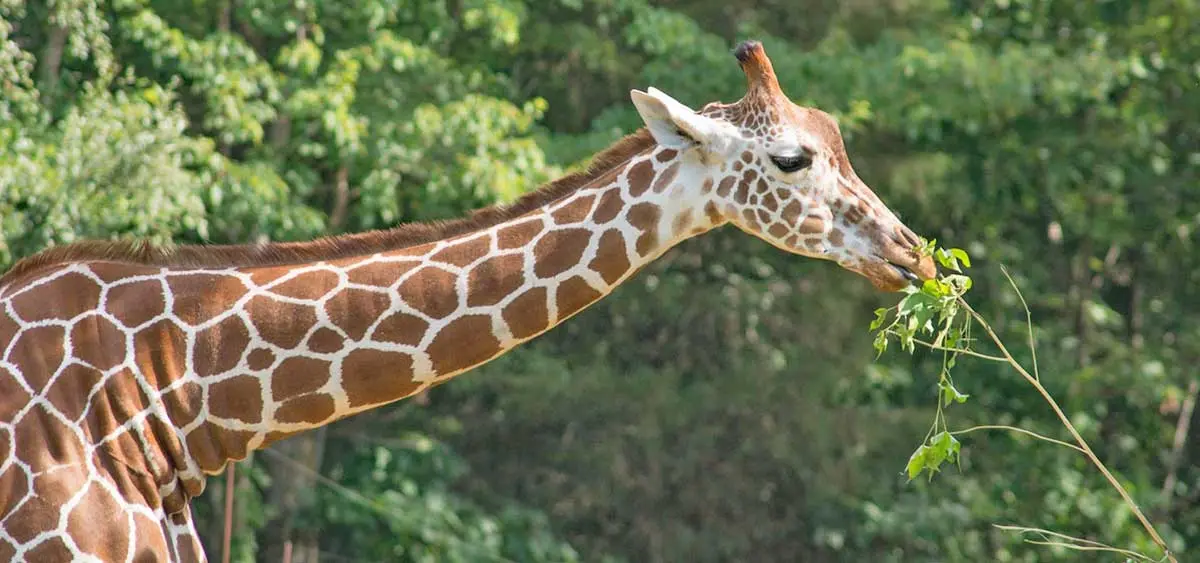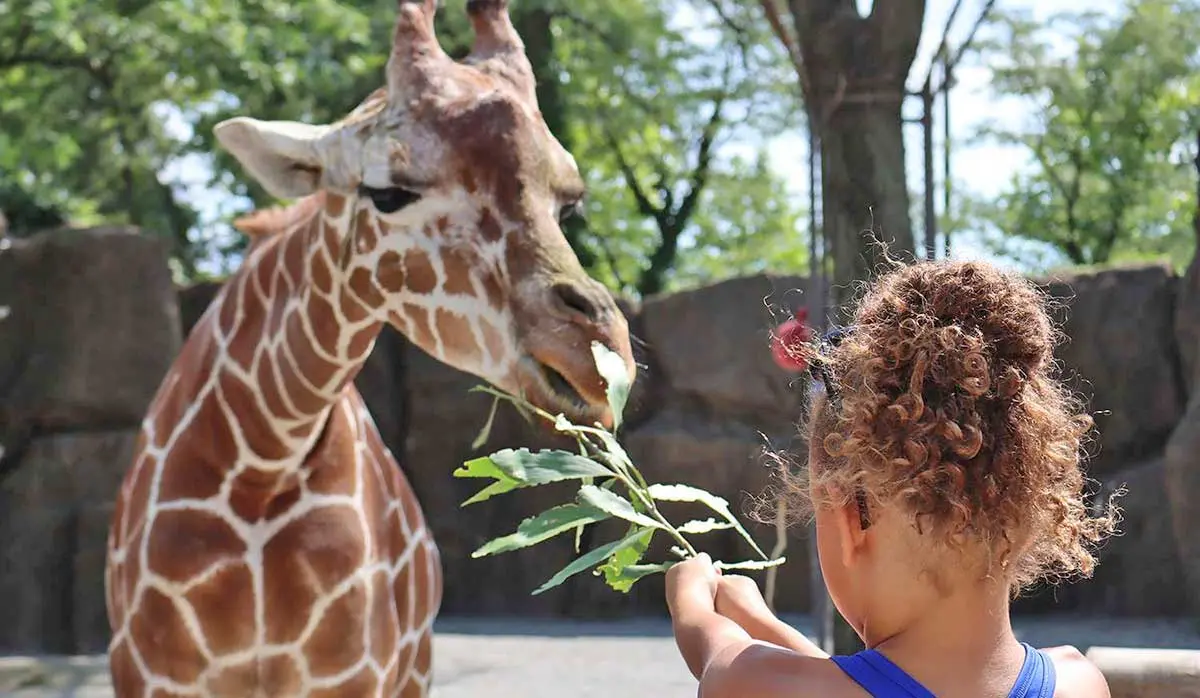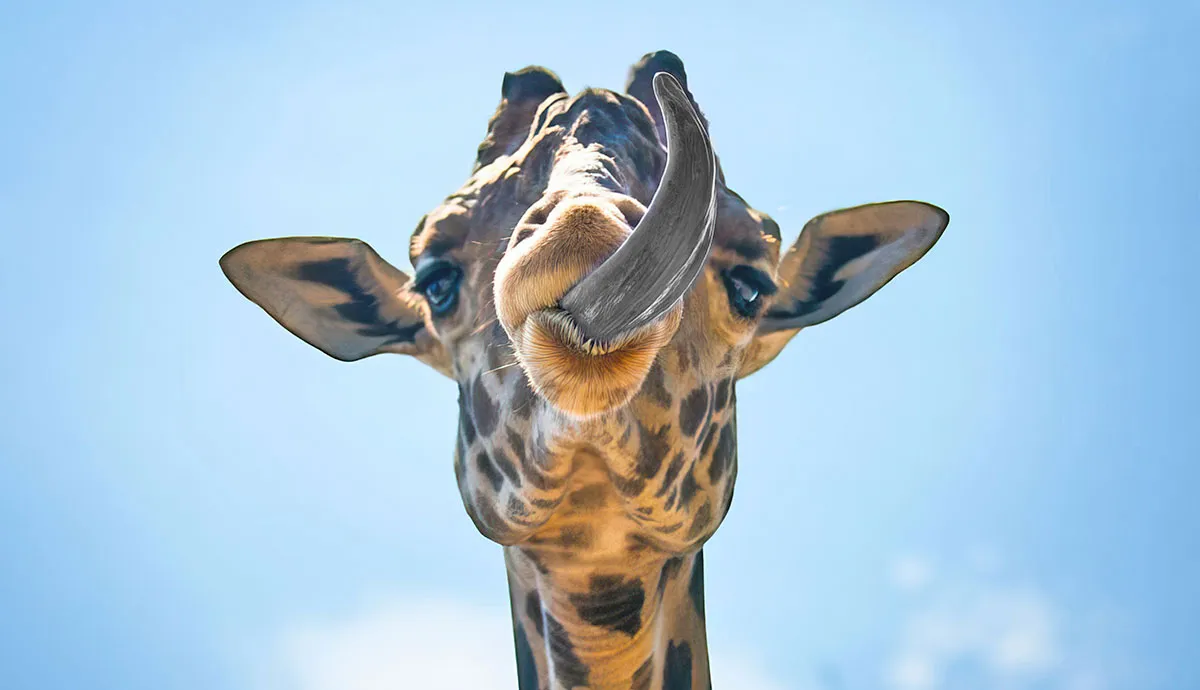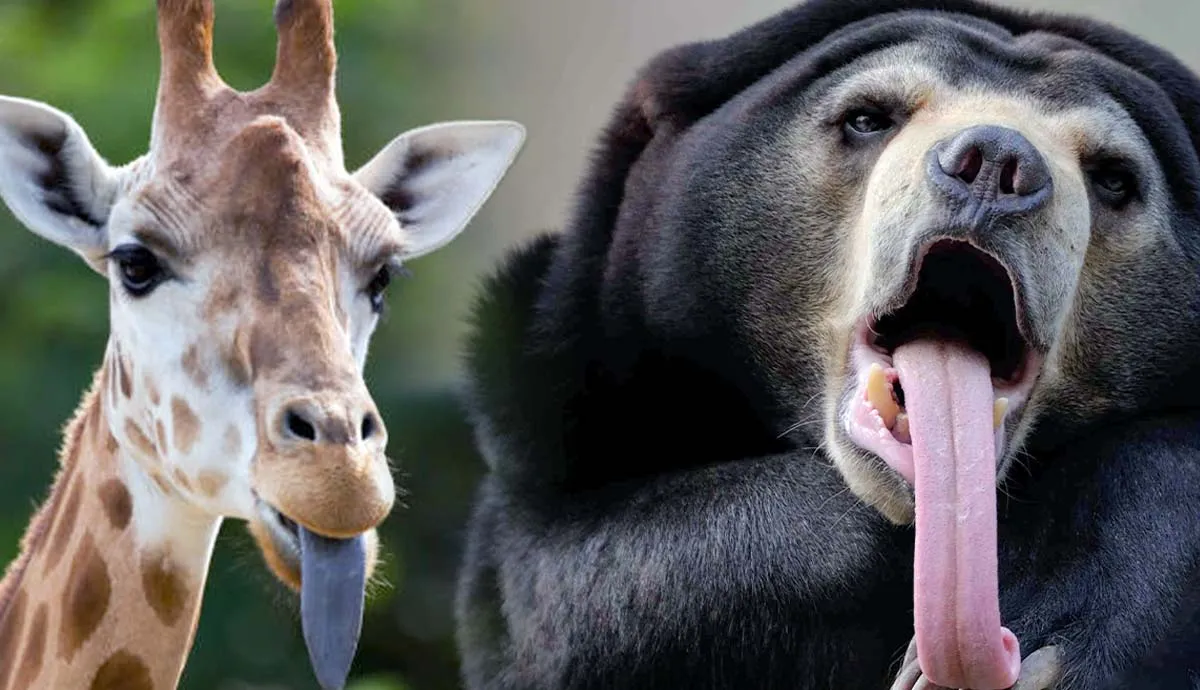Most people know that giraffes mainly feed on the leaves to survive. However, there’s so much more to a giraffe’s diet than just munching on leaves all day. Read on to learn more about the giraffe’s dietary habits.
How do Giraffes Eat?

As they mostly browse from the branches of trees, giraffes have evolved various adaptations that allow them to accomplish this feat easily. Most notably, these animals are known for their characteristically long necks, which help them reach plants that grow at heights that cannot be reached by most other herbivores (only elephants can reach these great lengths). Despite its appearance, giraffes have the same number of neck vertebrae as humans and most other mammals: seven! The bones are simply elongated, which makes them appear to have more neck bones. Some believe, however, that giraffes evolved long necks as a result of sexual selection, as bulls are known to engage in violent “necking” contests to compete for females. However, it is best to say that the length of the giraffe’s neck has evolved for both feeding and fighting, rather than one reason over the other.
Giraffes also have a long, prehensile tongue that is used to grasp off foliage while feeding. Interestingly enough, their tongues are also blackish in coloration as it is believed to prevent sunburn. They’re also very thick and tough, protecting them from the sharp, prickly thorns and spines that many trees have. Similarly, the giraffe’s lips are also protected by thick skin, along with hair, and are just as flexible as their tongues. This allows them to provide an extra grip while feeding. Giraffes also lack a pair of upper incisors and instead have a dental pad, which allows them to strip off vegetation in conjunction with their lower incisors.

Giraffes are ruminants, just like cows, and sport a four-chambered stomach. They’ll pick off and swallow the leaves that snack upon. After partially digesting them in their stomachs, they’ll eventually regurgitate the matter back into their mouths. Giraffes will then thoroughly chew their food once again, known as cud. An average giraffe will eat around 75-165 pounds of food in a single day!
Giraffe Diet in the Wild

As mentioned before, giraffes browse on trees in the wild. These animals mostly prefer snacking on leaves and young shoots from trees in the acacia family, as they provide high concentrations of the various nutrients that giraffes need to survive. Giraffes will also feast not only upon leaves, but will also happily dine on seeds, fruits, and even tree bark. Giraffes don’t just browse on trees; they’ll also feed on woody shrubs as well. Occasionally, they’ll also graze on grass, though this is rare. Giraffes have also been recorded chewing and sucking on bones, perhaps to supplement extra minerals, such as calcium and phosphorus, within their diets (though this is debated). This behavior is known as osteophagy, which translates to “bone-eating”, and could be a result of nutrient deficiencies. Other herbivores, from cattle to antelopes, have been recorded to also partake in osteophagy.
The giraffe diet can vary during the wet and dry seasons. Depending on location, deciduous tree species are eaten mostly during the wet season, while evergreen species are preferred during the dry season. Giraffes usually do not have to drink water during the wet season as all the moisture they obtain comes from the plants they eat. When the dry season hits, however, giraffes must drink around every few days.
Giraffe Diet in Zoos

The diet of a giraffe in a zoological setting is not too dissimilar from their wild counterparts, though they’re fed more than just leaves. In captivity, most zoos tend to feed their giraffes hay as an important staple part of their diet as it is nutritious and economically easy to get, especially during the winter when browse is harder to find. Giraffes are also fed fresh browse from various non-toxic tree species. To supplement their diets with extra nutrients, herbivore pellets are also an important part of a captive giraffe’s diet.
Giraffes are also given other foods, including vegetables and fruits to provide extra variety in their diets. These foods are offered as treats for training and enrichment purposes. Treats are also used to administer medicines if needed. Favorites include apples, bananas, carrots, and lettuce. These foods are given in only limited amounts, as the high sugar content can cause a myriad of health issues. Sometimes, treats are placed in various toys and other puzzle devices to provide mental stimulation for the giraffes, as it allows them to utilize their prehensile tongues.
Conclusion

All in all, giraffes eat lots of plant matter from trees, both in the wild and in zoos. These animals sport a variety of physical adaptations that allow them to forage on branches efficiently. The types of trees giraffes favor depend on their location, availability, and seasonality, though they prefer trees from the acacia family. They don’t just eat leaves: they’ll also feed on shoots, flowers, seeds, and fruits if available. In captivity, giraffes are fed hay, pellets, browse, and produce.



